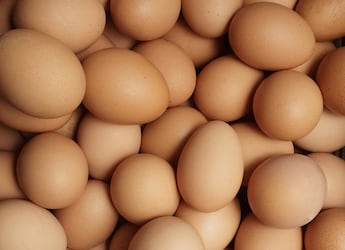As the heavens open up during the monsoon season, our kitchens become a battleground against the moisture that threatens to spoil our precious groceries. We take extra care to safeguard our pulses, vegetables, and spices, ensuring they stay fresh and unspoiled. But amidst all this, we often overlook the essential gas stove and cylinder that power our cooking endeavours. Gas cylinders are not only vital but also relatively expensive, prompting many individuals to try using a single cylinder for the entire month. Yet, during the rainy season, gas consumption tends to spike, with some households even needing two cylinders in a month. The constant cooking on gas stoves and lack of attention to cylinder consumption can lead to unexpected depletion before the month ends. If you've faced this predicament, fret not! We've got you covered with some smart tips to optimize your gas cylinder usage during the monsoon.
Also Read: 5 Monsoon Diet Tips To Save Your Tummy From Rainy Season Troubles
Why Does Gas Consumption Spike During The Monsoon?
During the monsoon season, gas consumption spikes due to increased cooking frequency and extended cooking times caused by the humid conditions. Many resort to cooking on low flames to keep warm, but this inefficient practice leads to higher gas usage. Inefficient cooking habits, such as cooking directly from the fridge, contribute to wastage. Gas leaks from increased moisture can also occur during this time. To tackle the issue, it's crucial to adopt efficient cooking practices, be mindful of appliance use, and prioritize safety to prevent leaks and unnecessary gas wastage.
Here Are Tips To Maximise Your Gas Cylinder Usage During Monsoon:
1. Avoid Cooking on Low Flame
When the rainy weather sets in, our culinary endeavours might slow down due to the cold and damp conditions. To counter this, some may resort to cooking on a low flame, hoping to conserve gas. However, this tactic might backfire. Low flames prolong cooking times, and the gas might occasionally extinguish due to the breeze, leading to potential gas leaks. To ensure safety and efficiency, it's essential to avoid cooking on low flames during the monsoon season. Instead, opt for a medium flame that balances cooking speed and fuel consumption, while always keeping an eye on the gas supply.
2. Don't Cook Directly from the Fridge
Picture this: you're in a hurry to get dinner on the table, so you grab ingredients straight from the fridge and begin cooking. But did you know that this seemingly time-saving method might increase gas consumption? When you cook food straight from the fridge, it takes longer for the ingredients to reach their optimal cooking temperature. As a result, you end up using more gas to achieve the desired outcome. Avoid this inefficiency by taking out milk and vegetables from the fridge well in advance, allowing them to come to room temperature. This small step can significantly reduce cooking time and gas usage.
3. Soak Lentils and Rice Before Cooking
Life's fast pace sometimes tempts us to skip soaking lentils and rice before cooking, but doing so can lead to higher gas consumption. To optimize your gas usage during the monsoon season, it's better to pause and soak both lentils and rice for some time before you start cooking. Soaking them softens the ingredients, reducing their cooking time and, in turn, conserving gas. Exercise a little patience and witness the benefits of this simple but effective tip.
4. How To Use Matchsticks
While modern gas stoves have automatic ignition systems, some still prefer the traditional matchstick method. If you're among them, here's a safety tip to bear in mind. Always ignite the matchstick first before turning on the gas. This precaution prevents wasting gas in case the matchstick fails to light due to moisture. Moreover, this practice reduces the risk of potential accidents, ensuring a safe cooking experience.
Safety First: Tips For Handling Gas Cylinders
Beyond optimizing gas usage, it's crucial to prioritize safety when handling gas cylinders. Follow these safety guidelines to ensure a worry-free cooking experience:
1. Proper Storage
Always store the gas cylinder in a vertical position on a flat surface in a well-ventilated area. This prevents potential gas leaks and ensures the cylinder remains stable.
2. Turn Off The Knob
After using the gas stove, be sure to close the gas knob tightly. This small step can prevent any sudden gas leakage when the stove is not in use.
3. Check The Seal
When receiving a new gas cylinder, inspect the seal thoroughly to ensure it's intact. Avoid tampering with the safety cap, as it can lead to leakage or accidents.
Also Read: 5 Common Herbs You Can Easily Grow in Kitchen Containers or Pots
Now that you're armed with these expert tips, make the most of your gas cylinder during the monsoon season. Save fuel, cook efficiently, and prioritise safety in your kitchen. Happy cooking and stay safe!
